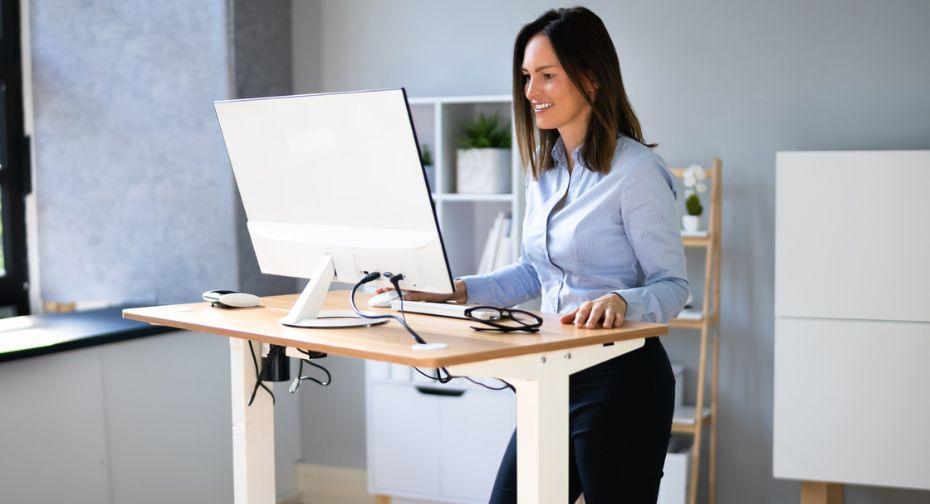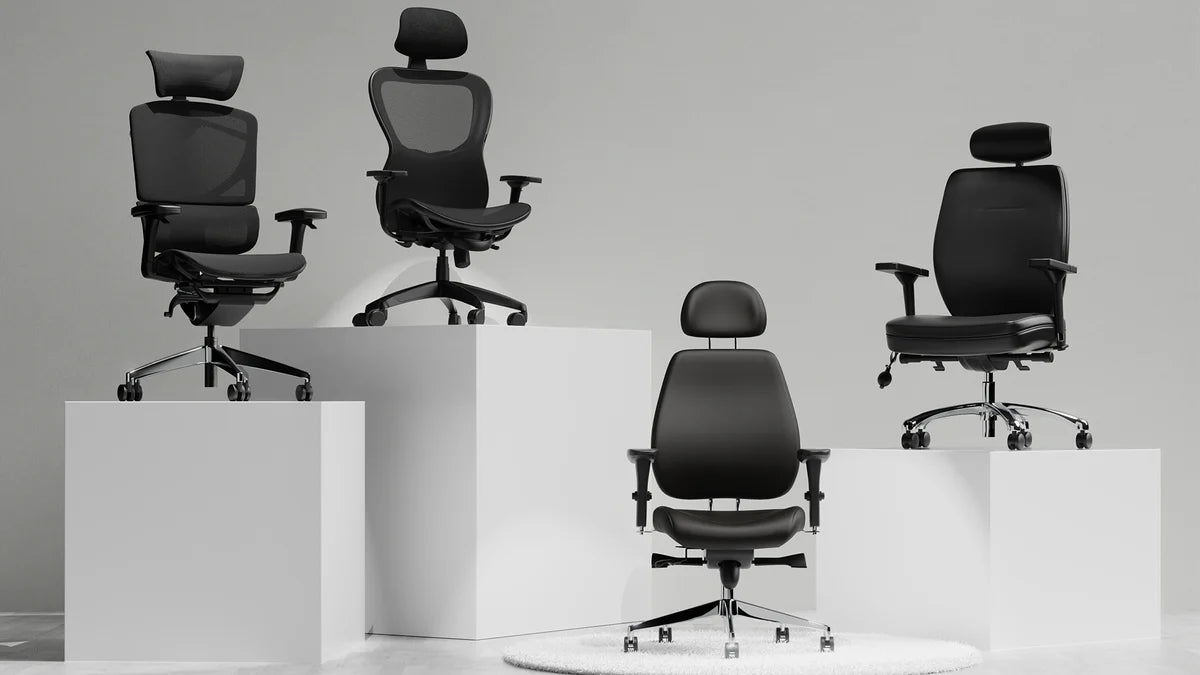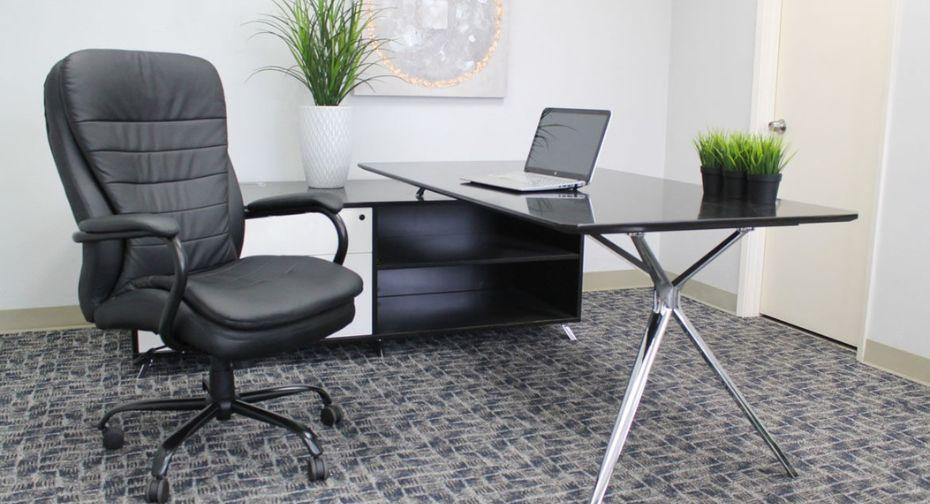Desks & Tables
Chairs
Office Storage
Accessories

Are Standing Desks Good For You?
February 27, 2024 4 min read
Are standing desks good for you? The answer depends on various factors such as individual preferences and health considerations. You need to literally reduce your sedentary behavior if you work in an office where you spend most of the day hunched at a desk and clicking away on a computer. Sitting for long periods of time can be bad for our health. ).
Michael Milicia, occupational therapist, says that some research shows people who spend too much time sitting are at a higher risk of obesity and diabetes. Even if you are actively working, your lower body will be relatively static and circulation will be reduced. Less movement means more pains and aches throughout the day.
Standing and moving around more during the day can have a positive impact on your health. Exercise and activity levels (or general movement) are among the most modifiable risks that an individual can alter. The effectiveness of standing desks is ultimately determined by factors such as individual preferences, work tasks and health considerations. Consult a healthcare professional to find out if a stand-up desk is the best option for your specific needs.
Are Standing Desks Good For You?

Exploring the question, "Are standing desks good for you?" involves understanding the potential benefits and drawbacks associated with this ergonomic solution. Standing desks are gaining popularity as an alternative to prolonged sitting. Standing desks are said to promote better posture, lower the risk of musculoskeletal problems, and increase productivity. These desks allow users to alternate between standing and sitting throughout the day. This may reduce back pain. It's important to remember that standing desks do not fit all, and the experience of each individual may differ. Standing for long periods of time can be uncomfortable.
How To Get More Movement Into Your Day
There are ways to "actively sit" at work.
Here are some recommendations:
- Take frequent breaks. Stand up, stretch out and move around to get the blood flowing. Set an alarm on your computer to remind you to take a break and stretch. Or do some standing yoga poses. Squats and lunges are great for getting your blood moving.
- Consider a standing workstation. You can also find other tasks that you can do standing, like talking on the phone or reading reports. Place your file cabinet to the side of the room, so you will have to walk to it. Standing desks are great, but you should alternate sitting and standing for every hour. Your best defense against a desk job is to move around!
- Walking Meetings. Find a reason to walk or have walking meetings. Walk to the office of your colleague down the hall instead of sending them an email.
- Exercise, commutes and commuting. Adding some exercise at home or to the gym to your schedule before or after work will help you offset the entire time spent sitting. Biking to work is a great way to get in a workout instead of driving to work. Use the stairs rather than the elevator, or buy a treadmill desk.
- Include seated exercises. Perform exercises while sitting at your desk. For example, interlock your fingers, turn your palms out, and extend your arms. Rotate your neck, shoulders and ankles.
- Get up and move around during lunch. Go to a different place. Climb some steps. Walk around your block for 10 minutes. Your mental and physical health will thank us.
- Mindful Monitoring. A fitness tracker, heart rate monitor, or pedometer can help you become more aware of how active you are and encourage walking throughout the day. At least 10,000 steps per day is the goal.
- Try sitting on a ball chair rather than an office chair. You can easily shift your weight on the ball, which forces you to use postural muscles in order to remain upright and balanced. You tend to be more alert when you are sitting on a ball.
Remember Good Eye Hygiene Is Important

Computer vision syndrome can be caused by prolonged staring at the screen. Changing your viewing angle, following the 20-20-20 Rule and blinking often are all helpful.
Keep Your Seated Posture Ergonomically Correct
It is not necessary for office workers to conform to the configuration of their desks or workstations when they receive them. You can easily set up your office to be ergonomic so you don't have pain or lose productivity.
- The monitor screen should be about an arm's distance away. When your head is turned forward, the top of your monitor should be level with your forehead. You should be looking straight ahead, not up or down.
- When you are using your keyboard or mouse, your elbows should be bent 90 degrees and at your sides. Be sure to not reach or strain your arm or wrist in order to reach the keyboard or mouse. You should also consider investing in an ergonomic mouse that keeps your wrists in a neutral, almost like you are shaking someone's hands.
- Your hips and your knees should form a 90-degree angle. Your feet should be on the floor or supported by a footrest when you are sitting. Your back should be supported fully in a straight, upright position against the backrest of the chair.
- Keep your head over your shoulders. Sit straight and neutrally with your spine, rather than leaning toward the computer as so many people do. Leaning forward places significant pressure and strain on your neck and upper spine.

Conclusion:
Are standing desks good for you? It's crucial to assess your own comfort levels and consider incorporating ergonomic practices to maximize their benefits. Standing desks offer many potential health benefits. These include improved posture, a reduced risk of musculoskeletal problems, and an increased level of energy. Some people may find it more comfortable to work in a dynamic environment by alternating between standing and sitting positions. It's important to remember that standing desks are suitable for different users. Personal preferences, job demands, and health should all be taken into consideration. Standing desks can be a great addition to any workspace if they are implemented correctly.
Leave a comment
Also in News

Creating an Ergonomic Workspace: Boost Comfort and Productivity with Posture Seating in Modern Offices
November 13, 2024 3 min read



















